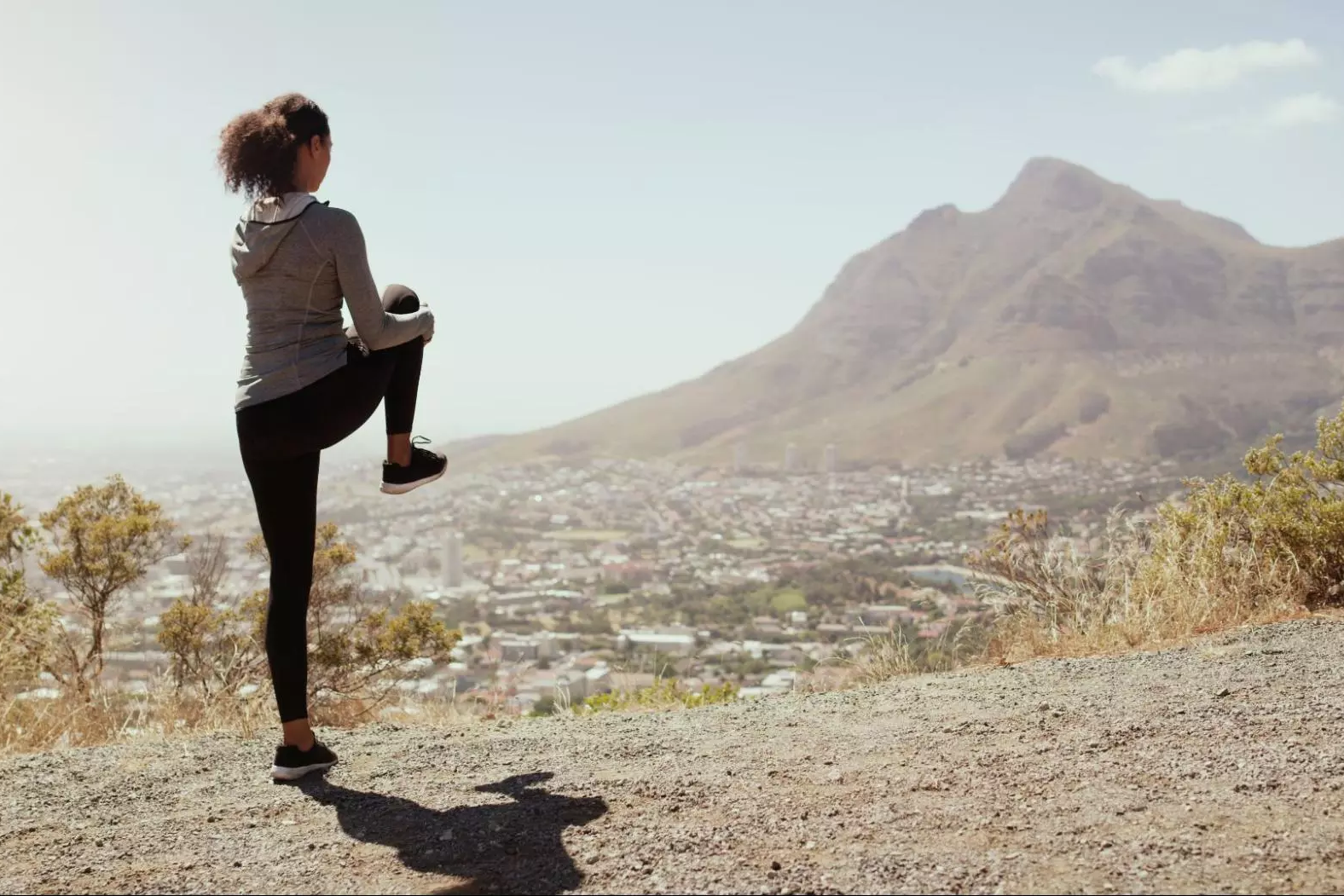Your Feet and Ankles are Your Foundation
Much like a building, our bodies require a solid foundation. A weak foundation in the human body is not only challenging for the feet and ankles, but also puts more stress on the knees and hip joints. This can lead to those joints also becoming weakened, which can adversely affect the way a person walks and moves.
Stretch First
You’ve probably heard about the benefits of stretching before you exercise, and this is especially important for the ankle joints. High-impact exercises like running apply significant force to the feet and ankles, so stretching beforehand can help prepare the muscles and ligaments for exercise.
Ankle Rolls: An easy entry point for warming up the ankles is to roll your ankle joint. This exercise can be done sitting or standing, and involves rolling the foot clockwise for 20 seconds, counter-clockwise for 20 seconds and repeating on the opposite foot three times. If you feel any stiffness, feel free to repeat the ankle rolls until the resistance subsides.
Calf Raises: Stand with your feet hip-width apart on the floor. Position yourself near a chair or wall if you need balance support. Lift yourself as high up on the balls of your feet as possible and hold for two counts, then slowly lower your heels until they hover over the floor. Repeat ten times. Optional: Try this exercise on the edge of a stair, holding onto a railing for balance support. This provides more space for the heels to hover, adding height to the calf raise.
Calf Raises: Stand with your feet hip-width apart on the floor. Position yourself near a chair or wall if you need balance support. Lift yourself as high up on the balls of your feet as possible and hold for two counts, then slowly lower your heels until they hover over the floor. Repeat ten times. Optional: Try this exercise on the edge of a stair, holding onto a railing for balance support. This provides more space for the heels to hover, adding height to the calf raise.
Strengthening Starts with Balance
Ankle stability begins with improving balance. Simply practicing balance can help you to build coordination within the joint that helps the muscles and ligaments become more responsive when faced with a potential injury. Even when an injury occurs, improved balance and coordination can help reduce the severity of the injury.
Single Leg Stance: This entry balance practice is as simple as the name implies. It involves standing on one leg and holding your balance for 20 seconds. We recommend bending your standing leg slightly so your knee does not lock. Repeat this simple balance practice three times on each leg. You can even add this practice into other daily activities—teeth brushing, washing dishes, even taking a break from sitting in front of the television. Keep a chair nearby if you need balance support, or position yourself close to a counter or wall.
Single Leg Stance, Forward: Similar to the above exercise, this balance practice will have you balance on one bent leg. This time, hold the other leg out in front of you. You can straighten your outstretched leg—holding it straight at an angle is suitable if you do not have the available flexibility to have your leg positioned parallel to the floor. You can also bend your knee for comfort, but make sure your leg is positioned forward from your standing leg. Hold the pose for 20 seconds and repeat three times for each leg. Optional: While your leg is raised, alternate between flexing and pointing the foot. Or, try to add ankle rolls into the position for an extra balance challenge.
Single Leg Stance, with Reach: Another iteration of the Single Leg Stance involves the upper body. Resume the above forward exercise. Maintaining your balance, reach your opposite arm toward the opposite outstretched leg. Hold for 20 seconds, repeating three times for each leg. This is the most challenging balance posture of the three Single Leg Stances, so make sure you have a sturdy chair, wall, or countertop nearby for balance support.
Tightrope Walk, No Rope Required: Pretend you’re walking a tightrope, heel-toeing as you walk on the floor. If you have floorboards, you can select a straight line of boards to follow to stay in a straight line. When you step, make sure your heel touches the toes of your opposite foot. You can hold your arms out for balance, or walk close to a wall if you need to reach out for support. Complete the walk for one minute, turning around as needed. Advance this move: Instead of turning around, try walking backward, reversing the direction of your heel-toe motion.
Single Leg Stance, Forward: Similar to the above exercise, this balance practice will have you balance on one bent leg. This time, hold the other leg out in front of you. You can straighten your outstretched leg—holding it straight at an angle is suitable if you do not have the available flexibility to have your leg positioned parallel to the floor. You can also bend your knee for comfort, but make sure your leg is positioned forward from your standing leg. Hold the pose for 20 seconds and repeat three times for each leg. Optional: While your leg is raised, alternate between flexing and pointing the foot. Or, try to add ankle rolls into the position for an extra balance challenge.
Single Leg Stance, with Reach: Another iteration of the Single Leg Stance involves the upper body. Resume the above forward exercise. Maintaining your balance, reach your opposite arm toward the opposite outstretched leg. Hold for 20 seconds, repeating three times for each leg. This is the most challenging balance posture of the three Single Leg Stances, so make sure you have a sturdy chair, wall, or countertop nearby for balance support.
Tightrope Walk, No Rope Required: Pretend you’re walking a tightrope, heel-toeing as you walk on the floor. If you have floorboards, you can select a straight line of boards to follow to stay in a straight line. When you step, make sure your heel touches the toes of your opposite foot. You can hold your arms out for balance, or walk close to a wall if you need to reach out for support. Complete the walk for one minute, turning around as needed. Advance this move: Instead of turning around, try walking backward, reversing the direction of your heel-toe motion.
Be Consistent
In order to see improvement in ankle stability, you should try to practice ankle warm-ups and balance exercises every day. Completing all of the above movements can be accomplished in 6–7 minutes, and the multitasking benefit of the Single Leg Stances makes it easy to support your multitasking ankle joints.
See a Foot and Ankle Specialist
If you do experience an ankle injury, it’s important to seek medical attention from a professional. Due to the intricacy of these joints, Foot and Ankle sports medicine is a specialty offering in many orthopaedic practices. At The Steadman Clinic, our Foot and Ankle Team can provide you with a personalized treatment plan to get you back on your feet.


